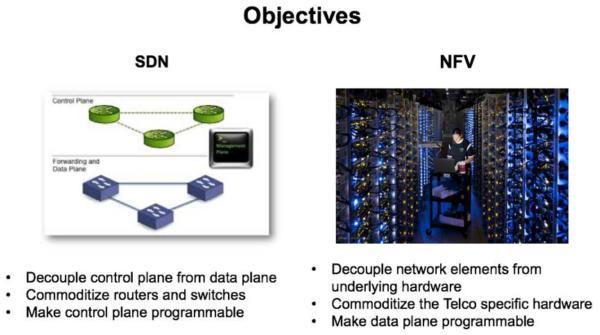专业的人说的很准确但是普通人难以理解,常常记不住,分不清,不专业的人往往又说的差点意思。无意间,笔者在领英上看到一个介绍SDN/NFV区别的公开文档,内容详实,简明扼要。 这里我将这个文档精彩的部分分享给大家。
开篇鸣谢:原作者是Riverbed的产品市场经理JustynaBak。
Page1:核心

SDN的三个核心要点有三个:
- 将控制平面和数据平面分离,这是最核心的部分,现在经常提到的SDS其核心也是控制和转发分离,这是SDS设计重要原则之一,可见SDN是先于SDS的;
- SDN使用的都是商用化,通用的路由器和交换机,这是相对于专有的芯片,专有的架构,专有的设备而言的;
- 控制面可编程;
对应的NFV的三大关键点是:
- 将网络设备的功能从网络硬件中解耦出来;
- 将电信硬件设备从专用产品转为商业化产品;
- 数据平面可编程;
